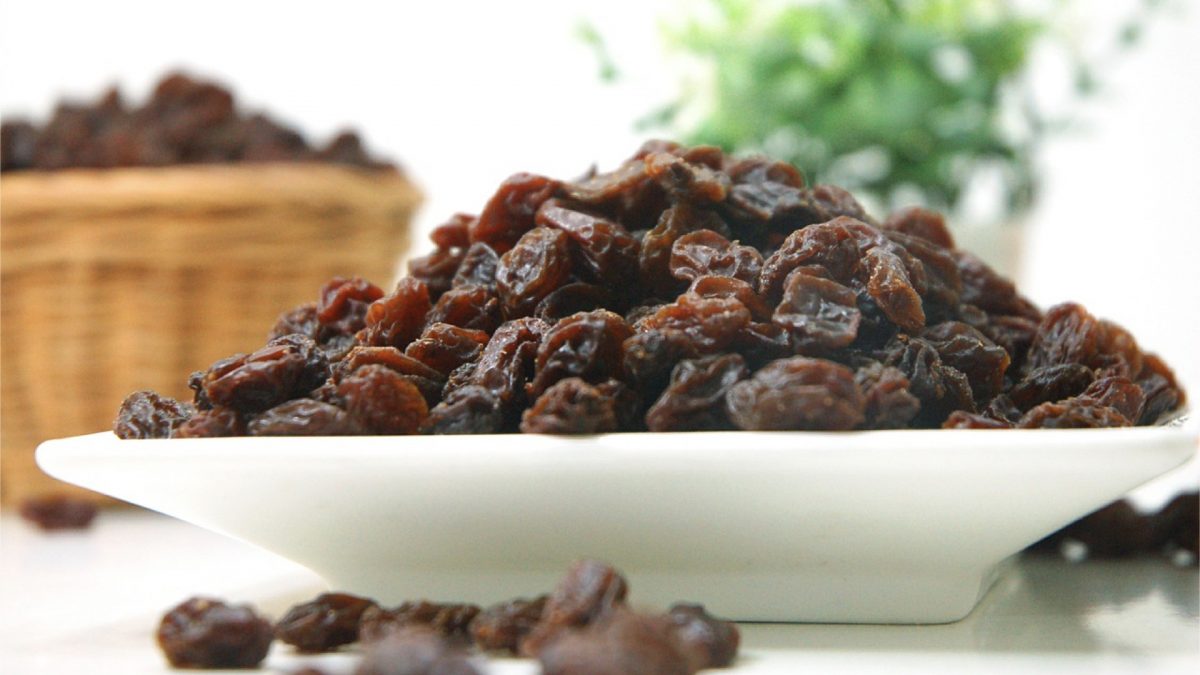“Raisins have a long-standing reputation as a food that promotes dental caries (cavities),” based on decades-old studies on rats that ranked raisins up there with cupcakes as among the most cavity-promoting foods. To this day, you’ll see dental authorities advise against eating dried fruit, like raisins. As I discuss in my video Do Raisins Cause Cavities?, more recent evidence—from studies done on actual people—“casts some doubt on the role of raisins with regards to tooth decay.”
The formation of cavities depends on three factors: acid, adherence (the stickiness of food to teeth), and the bacteria that make up the dental plaque. If you have kids swish some sugar water in their mouth, within five minutes, the pH of the plaque on their teeth plummets as the bacteria convert the sugar to acid. A commercial raisin bran cereal was practically just as bad. Bran flakes alone, without the raisins, weren’t as bad, however. Is that because the raisins in raisin bran cereal are crusted with sugar, though, or because of the raisins themselves? Well, raisins didn’t lead to much acid at all, and the big surprise was that if you combined the non-sugar-coated raisins with the bran flakes to create a kind of experimental raisin bran cereal, the raisins seemed to help prevent some of the acid the bran flakes were causing.
Although raisins are about 70 percent pure sugar, they caused less acid to be produced, and don’t actually appear to adhere to our teeth. Wait. Raisins do stick to our teeth, don’t they? Twenty-one foods were put to the test, and there was actually no relationship between food retention and how sticky the foods appeared to be. Bits of cookies, crackers, and potato chips actually stuck to the teeth the longest, whereas foods you’d think would stick, like caramels and raisins, disappeared within minutes. Fresh fruit like apples and bananas disappeared from the mouth almost immediately.
Phytonutrients in grapes appear to actually prevent the adherence of bacteria and prevent plaque formation, so much so that grape pomace, the by-product of wine making, is being investigated as a cavity-preventing food additive. Or, you could just drink the wine. Non-alcoholic wine inhibits the growth of the primary cavity-causing bacteria, though raisins would probably be a more appropriate snack for kids.
There’s a new test available to measure the cavity-causing activity of plaque bacteria. A pilot study was performed to see if the risk for cavities increases, decreases, or remains the same after eating raisins. They took 156 folks, swabbed their teeth, waited for the readings to get up over 1,500, which indicates high cavity-causing activity, and had half eat a little box of raisins and the other half eat nothing. In the eat-nothing control group, they started out at around 6,100 and, 15 minutes later, were still up at 6,100. The raisin group started around 5,950, but, after raisin consumption, their cavity risk score dropped down to 3,350. Although that’s a big reduction, note the score was still higher than the 1,500 cutoff, indicating they were still at risk—but the risk went down after eating raisins, not up. So, while raisins traditionally have been thought to promote tooth decay, current research suggests that raisins may not contribute to cavities after all—or at least not any more than other foods.
For more on raisins, see:
- Raisins vs. Jelly Beans for Athletic Performance
- Garlic and Raisins to Prevent Premature Birth
- Are Raisins Good Snacks for Kids?
What about dried fruit in general? Check out:
- Dried Apples, Dates, Figs, or Prunes for Cholesterol?
- Do Fruit and Nut Bars Cause Weight Gain?
- Better Than Goji Berries
- Prunes vs. Metamucil vs. Vegan Diet
To learn more about oral health, see:
- Plant-Based Diets: Oral Health
- Plant-Based Diets: Dental Health
- What’s the Best Mouthwash?
- Don’t Use Antiseptic Mouthwash
- Protecting Teeth from Hibiscus Tea
- The Downside of Green Smoothies
- Antibacterial Toothpaste: Harmful, Helpful, or Harmless?
- Black Raspberries vs. Oral Cancer
- Can Gargling Prevent the Common Cold?
In health,
Michael Greger, M.D.
PS: If you haven’t yet, you can subscribe to my free videos here and watch my live, year-in-review presentations:
- 2012: Uprooting the Leading Causes of Death
- 2013: More Than an Apple a Day
- 2014: From Table to Able: Combating Disabling Diseases with Food
- 2015: Food as Medicine: Preventing and Treating the Most Dreaded Diseases with Diet
- 2016: How Not To Die: The Role of Diet in Preventing, Arresting, and Reversing Our Top 15 Killers
